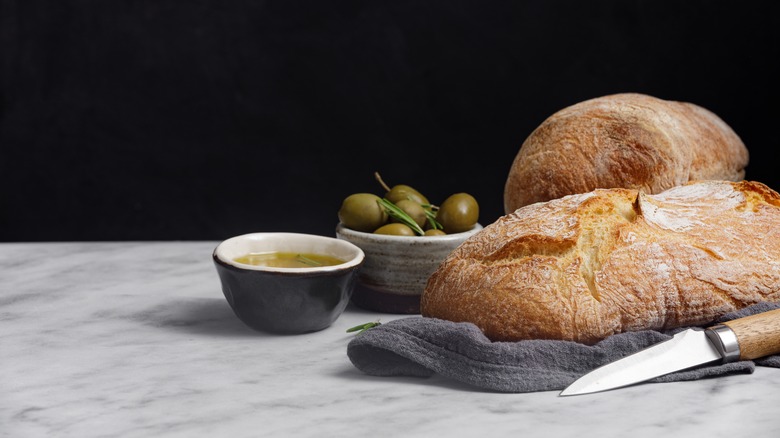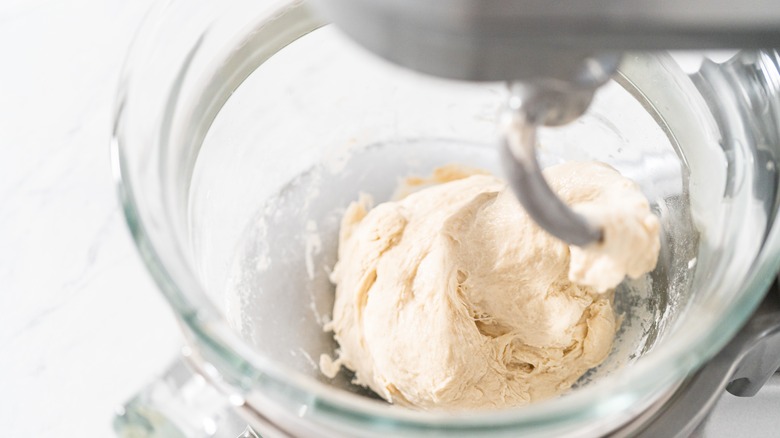The Reason Homemade Ciabatta Is Best Made With A Stand Mixer
Ah, bread: What is it about this yeasty, fluffy stuff that inspires such ardent devotion? Well, perhaps the answer has something to do with how delicious a high-quality, well-made bread is, how it makes the ideal foundation for a towering sandwich or a generous schmear of butter, or how it can, magically, turn into croutons, breadcrumbs, and even French toast. Maybe it's how bread saves the day when you're staring down a near-empty bowl, swiping up that remaining soup or tomato sauce. Perhaps it's how bread represents coming together with loved ones, epitomized by the expression "breaking bread" (via Writing Explained).
Or it could be the fact that there's a bread type for every taste out there, from rustic, chewy sourdough to light-as-a-feather brioche to fruit-studded cinnamon raisin. And if you like light-textured, airy bread with a thin, crisp crust, you'll probably love ciabatta, the classic Italian loaf that's baked in long, flat, puffy, and roundish shape: Hence its name, which translates to "slipper" in English (via MasterClass).
Often used for dipping in olive oil as well as a fantastic, soft sandwich bread perfect for embracing Italian cold cuts and cheeses, ciabatta is, fortuitously, fairly easy to make at home. But, before you set to work doing so, make sure you have your stand mixer ready to go.
Ciabatta dough is especially sticky
If you've ever made ciabatta bread at home, you may have ended the experience with extremely sticky, dough-covered hands and a messy workspace. That's because, as bread bakers know, ciabatta dough is an especially sticky one. According to Baked by an Introvert, this is because the dough is very high-hydration, a bread-baking term that simply refers to the amount of water used per the amount of flour. Since ciabatta dough uses a lot of water, resulting in an 80% hydration, it's extremely sticky and can be fairly difficult to work with and shape into loaves.
That's why, according to MasterClass, it's best to avoid using your hands altogether, and make this dough in a stand mixer fitted with a dough hook attachment. That way, you'll avoid the temptation to add more flour to the dough to make it less sticky, which would ruin the airy end result the bread is intended to have (if you don't have a stand mixer, you can make the dough in a food processor, the outlet notes). After two short rises, you'll gently shape the yeasted dough, let it rise again briefly, and then move those oval-ish, slipper-like loaves to the oven to bake.
If all goes well, you'll be rewarded with a light, infinitely versatile loaf of bread — that's not likely to last long in your breadbox.

